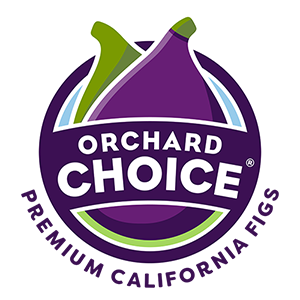If you want to thrive like ancient Olympic athletes, you need to eat like one too. Do you know what Ancient Greek athletes ate before competitions? A handful of dried figs. It’s no wonder consuming foods in a Mediterranean diet can be increasingly beneficial for one’s health: it seems like they had it all FIGured out. If you’ve ever wondered what is in the Mediterranean diet, it classically includes an abundance of fresh vegetables, minimally processed whole-grains, legumes, nuts, seeds, fresh and dried fruits, olive oil and occasionally, seafood.1
Several population-based and prospective epidemiological studies have shown that following a Mediterranean diet could protect against heart disease, stroke, obesity, diabetes, hypertension, and Alzheimer’s disease.1 It is supported that this diet can lower lipid levels, protect against inflammation, modify hormone and growth factors in the cancer process, and support a healthy gut micro-biome.1
The best part? You don’t need to live in the Mediterranean to follow this style of eating foods in a Mediterranean diet.

How Figs Fit into the Foods in a Mediterranean Diet
The fig fruit is one of the most important agricultural products of the tropics and subtropics.2 Figs are a seasonal fruit that come in a variety of colors, from dark purple to green, and can be consumed fresh or dried.2 Dried figs are an important source of minerals like iron, calcium and potassium, and vitamins like thiamin and riboflavin.2 They are also free from sodium, fat and cholesterol, which we should generally avoid.
Traditionally, dried fruit, with no added sugar, have been valued for their sweetness and long-term stability.3 Rich in fiber and antioxidants, figs have been an integral part of the Mediterranean diet for centuries, and rightfully so. Historically, fruit consumption in the U.S. has been low, a statistic that has changed very little in recent years.3 In data analyses comparing dried fruit consumers and non-consumers, dried fruit consumers had lower intakes of fats, alcohol and added sugars, and higher intake of vegetables.3
Additionally, consumers of dried fruit had higher intakes of calcium, phosphorous, magnesium, iron, zinc, copper and potassium.3 Like many fresh fruits, dried fruits also have a low to moderate glycemic index (GI) (which measures the blood-glucose raising effect of food), and may help stabilize lipid levels.3 Nuts and dried fruit also have a very complementary nutritional portfolio and they have culturally been paired together as snacks or in prepared foods.3 Due to their fat content, incorporating nuts with dried figs could help lower the glycemic response.
Ultimately, replacing one traditionally “unhealthy” snack food a day with a serving of dried figs could help increase fruit intake and incorporate nourishment full of fiber and antioxidants. So, now that you have a better grasp of what is in a Mediterranean diet and how figs factor in, here are some ideas for bringing figs into meals and mini-meals.

How to incorporate dried figs into your diet:
- Snack on them alone, or pair with nuts or seeds
- Slice them to use on toast with nut butter and honey
- Chop them up into salads for a sweet kick (especially arugula)
- Add them to breads, muffins or cookies
- Add to oatmeal or yogurt for a quick breakfast
- Add to smoothies to sweeten instead of table sugar
- Pair with morning coffee or tea
It is evident that figs are figgin’ awesome: they are sweet, shelf-stable, portable, accessible, and overall, very convenient. So, whether you follow the Mediterranean diet or not, there is always room for a serving of dried figs in your life.
Article & photos by Nayiri Khatchadourian, MPH, MS2
___________________________
References
1. Tosti V, Bertozzi B, Fontana L. Health Benefits of the Mediterranean Diet: Metabolic and Molecular Mechanisms. Journals Gerontol – Ser A Biol Sci Med Sci. 2018. doi:10.1093/gerona/glx227
2. Arvaniti OS, Samaras Y, Gatidou G, Thomaidis NS, Stasinakis AS. Review on fresh and dried figs: Chemical analysis and occurrence of phytochemical compounds, antioxidant capacity and health effects. Food Res Int. 2019. doi:10.1016/j.foodres.2019.01.055
3. Carughi A, Feeney MJ, Kris-Etherton P, et al. Pairing nuts and dried fruit for cardiometabolic health. Nutr J. 2016. doi:10.1186/s12937-016-0142-4





